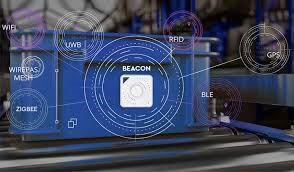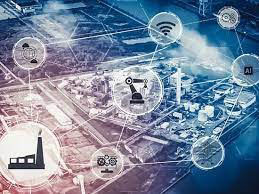In the manufacturing, engineering, and logistical industries, industrial real-time location or locating systems are a hot topic. Real-time location systems (RTLS) are widely utilized in the manufacturing, logistics, aerospace, and engineering industries. Accurately and successfully tracking assets and people as they move through facilities is a continuing problem for businesses involved in these industries. Therefore, improving efficiency, safety, and value requires an awareness of RTLS technology.
This guide offers a thorough and accurate RTLS technology jargon. Let’s get started.
RTLS technology creates a digital map of a building, factory, plant, or hangar by tracking the geolocation of assets or people in real-time. Organizations can use real-time data to make more informed decisions, increase productivity, and identify inefficiencies by implementing an RTLS system.
Site managers can identify time-consuming jobs, lost assets, inappropriate procedures, deficits, inventory, and much more by using RTLS systems. Both moving and motionless objects can have active and passive RTLS tags attached to them.
Real-time Location Systems, or RTLS for short, are built on tools for tracking people and objects that are linked to cloud-based platforms. As the assets pass through a manufacturing, engineering, or logistical process, it manages them.
Benefits of RTLS
- Improved accuracy
Accuracy in inventory management is essential and must be pursued at all costs. You may attain and maintain an inventory accuracy of 99.9% with RTLS system without using additional manpower, which will help you avoid spending money on time-consuming and expensive inventory audits. The RTLS system delivers all required real-time data in a matter of minutes. With each pallet shift, RTLS can boost productivity by up to fifteen seconds while also giving visibility into the when and where of inventory movement. By getting rid of the demand to manually scan a barcode each time a pallet is picked up or set down, this is made practicable.
- Improved efficiency
With RTLS, you may get precise information on the driver and the shipment in real time. You will be able to pinpoint precisely where and how time is being lost as a result. You can, therefore, adjust efficiency as a result. Drivers may quickly access real-time location information, which reduces the amount of time they waste looking for assets and their whereabouts. Companies could reduce the number of FLTs required by 20% within six months by implementing RTLS.
- Improved safety and security
The conventional methods of tracking employees rely on passive RFID and GPS, both of which suffer from RF interference, have a small operating range, and generate poor data rates. A person can go through a large area without the tracking device picking up crucial information due to the slow transmit speeds. This can cause issues with security or safety. When operational requirements demand “a need to know” where all employees are located at all times and for how long, low latency alarms are necessary. Thankfully, RTLS makes achieving this simple.
Applications of RTLS
- Asset tracking
One of the main uses of RTLS is asset monitoring, which enables companies to manage and monitor their pricey assets in real-time. Assets can be tracked in order to make sure they are at the proper location at the appropriate time using RTLS systems. This is especially helpful in sectors like manufacturing, logistics, and healthcare, where the effective use of resources is essential.
- Employee tracking
RTLS technology can be used to monitor an employee’s movement and location within a workplace. This is especially helpful in fields like healthcare and manufacturing, where managing workflow effectively and ensuring employee safety are top priorities. Systems for tracking employees that use RTLS can increase productivity by allocating resources more effectively, speeding up responses.
- Indoor positioning systems [IPS]
RTLS-based Interior Positioning Systems (IPS) provide accurate location tracking in internal contexts. IPS can help personnel in significant buildings, direct shoppers to malls, and increase security and safety in hospitals. IPS improves the user experience, and streamlines processes in numerous situations by offering exact position data and accurate indoor navigation.
- Access control
Employees and guests are permitted to pass through security checkpoints with the use of access control technologies. Alternatively, if you’re utilizing geofencing, they track movement around those fictitious boundaries. When you wish to track employees in real-time, you can do so by using RTLS tags that authenticate them and offer location information.
How much does RTLS cost?
Of course, the critical concern is still how much you should allocate for your RTLS system. Without knowing more about your company, it might be challenging to determine an exact price. Still, a general estimate for a small to medium-sized business would be between $10,000 and $50,000 for the initial setup. The cost of maintenance and support, for example, might run the gamut from a few thousand dollars to a sizeable portion of the initial expenditure.
Remember that these figures are only preliminary estimates, and your actual expense may change depending on your particular needs, the RTLS partner you select, and any other services you may need.


0 Comments